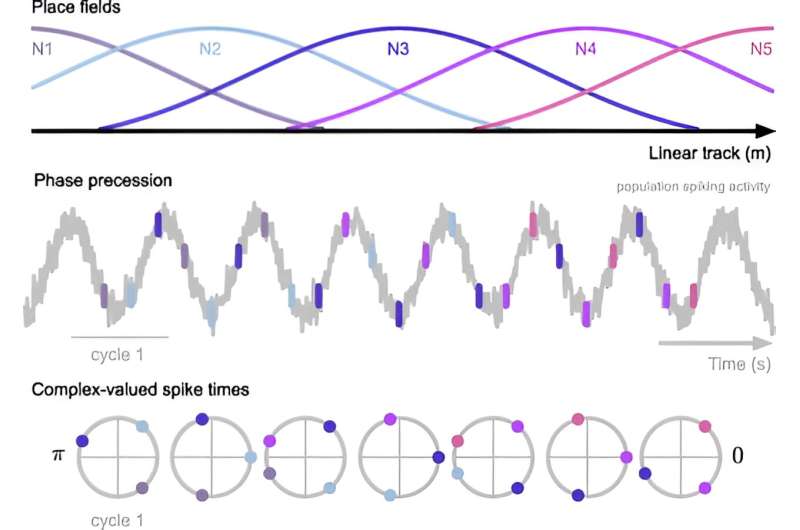This article has been reviewed according to Science X's editorial process and policies. Editors have highlighted the following attributes while ensuring the content's credibility:
fact-checked
peer-reviewed publication
trusted source
proofread
New math approach provides insight into memory formation

The simple activity of walking through a room jumpstarts the neurons in the human brain. An explosion of electrochemical events or "neuronal spikes" appears at various times during the action. These spikes in activity, otherwise known as action potentials, are electrical impulses that occur when neurons communicate with one another.
Researchers have long thought that spike rates are connected to behavior and memory. When an animal moves through a corridor, neuronal spikes occur in the hippocampus—an area of the brain involved in memory formation—in a manner resembling a GPS map. However, the timing in which these spikes happen and their connection to events in real-time, was thought of as random until it was discovered that these spikes happen with a specific and precise pattern.
Developing a new approach to studying this phenomenon, Western University neuroscientists are now able to analyze the timing of neuronal spikes. Their research found that spike timing may be just as important as spike rate for behavior and memory.
"More and more experimental evidence is accumulating for the importance of spike times in sensory, motor, and cognitive systems," said Lyle Muller, senior author of the paper and assistant professor in the Faculty of Science.
"Yet, the exact computations that are being done through spike times remain unclear. One reason for this may be that there isn't a clear mathematical language for talking about spike-time patterns across neurons—which is what we set out to develop."
Published recently in the journal Physical Review E, the paper outlines a new mathematical technique to study the neural codes taking place during spike-time sequences.
"Neurons fire at really specific times with respect to an 'internal clock,' and we wanted to know why," said Alex Busch, co-first author of the paper and a Western BrainsCAN Scholar. "If neurons are already keeping track of the animal's position through spike rates, why do we need to have specific times on top of that? What additional information does that provide?"
Busch, along with co-first author Federico Pasini, assistant professor in the department of mathematics at Huron College, identified spike times from known experimental data. Studying the patterns as a code, the researchers were able to transfer the spike times into a mathematical equation.
"This is the first time we are able to ask what computation could be done with these spike times. What we found was that it's more than just current location; the pattern of spike times actually creates a link between the recent past and future predictions that's encoded in the timing of spikes itself," said Busch, a Ph.D. student in the department of mathematics now working to create new mathematical approaches to analyze and understand spike times. "These are the sorts of patterns that may be important for learning and memory."
Beyond giving researchers a method to study spike times and their relation to behavior and memory, this study also paves the way for studying deficits found in neurodegenerative diseases. A better understanding of the significance of spike times may lead to a better understanding of what happens when spike patterns break down in Alzheimer's disease and other memory disorders.
"If we have a language for spike times, we can understand the computations that might be occurring. If we can understand the computations, we can understand how they break down and suggest new techniques to fix them," said Muller.
More information: Federico W. Pasini et al, Algebraic approach to spike-time neural codes in the hippocampus, Physical Review E (2023). DOI: 10.1103/PhysRevE.108.054404
Journal information: Physical Review E
Provided by University of Western Ontario



















